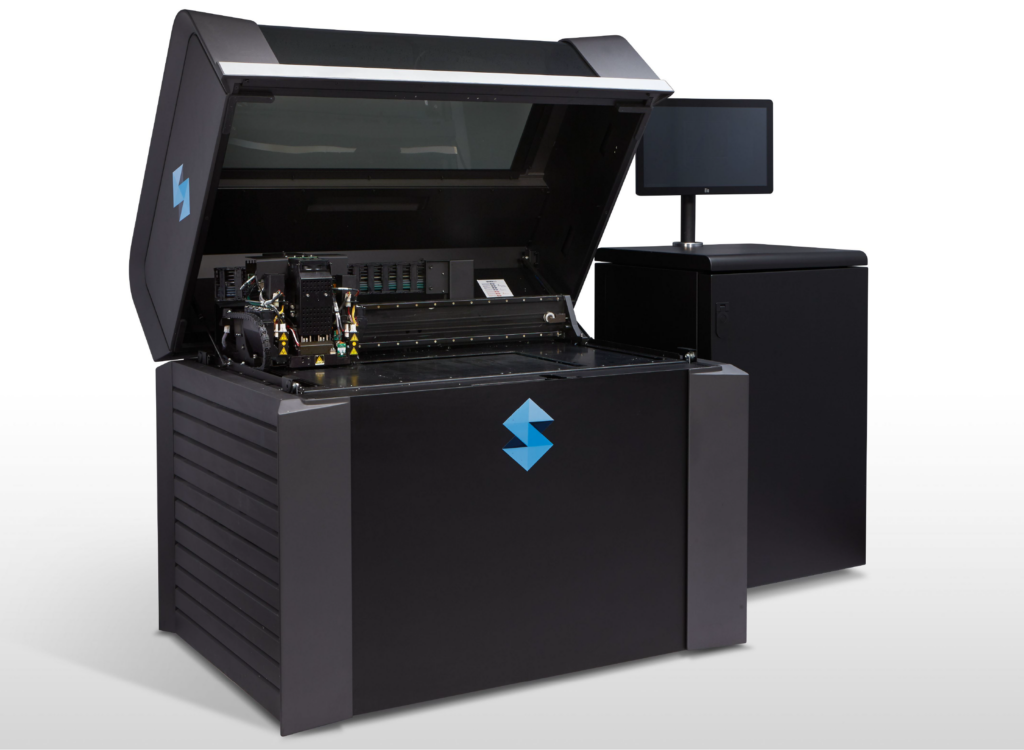
The infamous Xbox controller, specifically: The ABXY buttons.
Customer Profile
The first thing you’d see, when entering Microsoft’s Advanced Prototyping Center (APC), is a door labeled with the periodic symbol for Carbon. The building is a 26,000 square foot prototyping facility, home to a team of highly passionate Industrial Designers and Engineers.
Following the mantra of “Fail Fast,” the APC is responsible for quickly generating confidence in development decisions for Microsoft’s designers, engineers, and partners. 3D printing plays an integral part of the “Fail Fast” development process, and Stratasys PolyJet models are a part of the team’s daily routine.
The Product
Since the first generation of Xbox, the ABXY controller buttons have been more than just functional keys for gaming. Their jewel-like appearance adds to the aesthetic appeal of the controller, and makes it easier for gamers to identify and press the correct buttons. As someone who is good and poorly playing video games, I can attest to this.
Historic Prototyping Methods
The first two generations of Xbox ABXY buttons were typically made of two parts: the bottom-colored portion with a letter and a clear cap, built together with over-molding.
Subsequent generations increased the part count to at least three: a black base, a colored letter, and a clear cap. As Microsoft’s prototyping advanced, so did prototyping complications.

The Challenge
Here was the issue: Each layer had to be fabricated individually. Then, molds of the individual parts and a mold of the fully assembled part needed to be produced. Then, copies of the button were inserted into an assembly mold. Then, clear resin was cased over the base, creating the “under the glass design.” Then, the process had to be repeated for each of the remaining three buttons. As you can tell by the volume of “Thens” in this paragraph, the process was tedious.
An adjacent fun fact: Each of the four buttons is a unique shape, fitting perfectly with the curve of the controller. This added to prototyping complications.

"The improvements we see with the GrabCAD software, such as the ability to apply advanced color/opacity techniques directly in the software has made the Stratasys J850 an even more powerful tool for hardware development at Microsoft."
Mark Honschke, Additive Prototyping Lead at Microsoft
The Solution
The introduction of multi-material 3D printing drastically changed the APC’s prototyping process. With Stratasys’ first generation two-material 3D printer, the team could print buttons quickly, that more closely resembled the final product, dramatically reducing prototyping time. However, this first generation printer didn’t allow full-color prototyping. Only the overall shape changes could be prototyped with 3D printing.
With the advancement of Stratasys technology came the advancement of Microsoft’s capabilities. The J850 Prime’s full-color, multi-material printing capabilities allows the APC team to change the shape and color of objects within prototypes, and create multiple prototype variations in a single print. The team can also add color vaiation and textures to individual surfaces with the smallest amount of detail. In the gaming world, those small details can have a huge impact on user experience.
What does the team have to say? “Stratasys’ PolyJet technology color matching accuracy has reduced the time needed to prototype Xbox controller buttons, which has given us the capacity to explore more options, ensuring we produce an exciting array of products for the Xbox player community.” – Erik Sijers, Model Maker
To learn more about PolyJet technology and the J850 Prime, give us a call at 949.474.9222 or email us at [email protected].